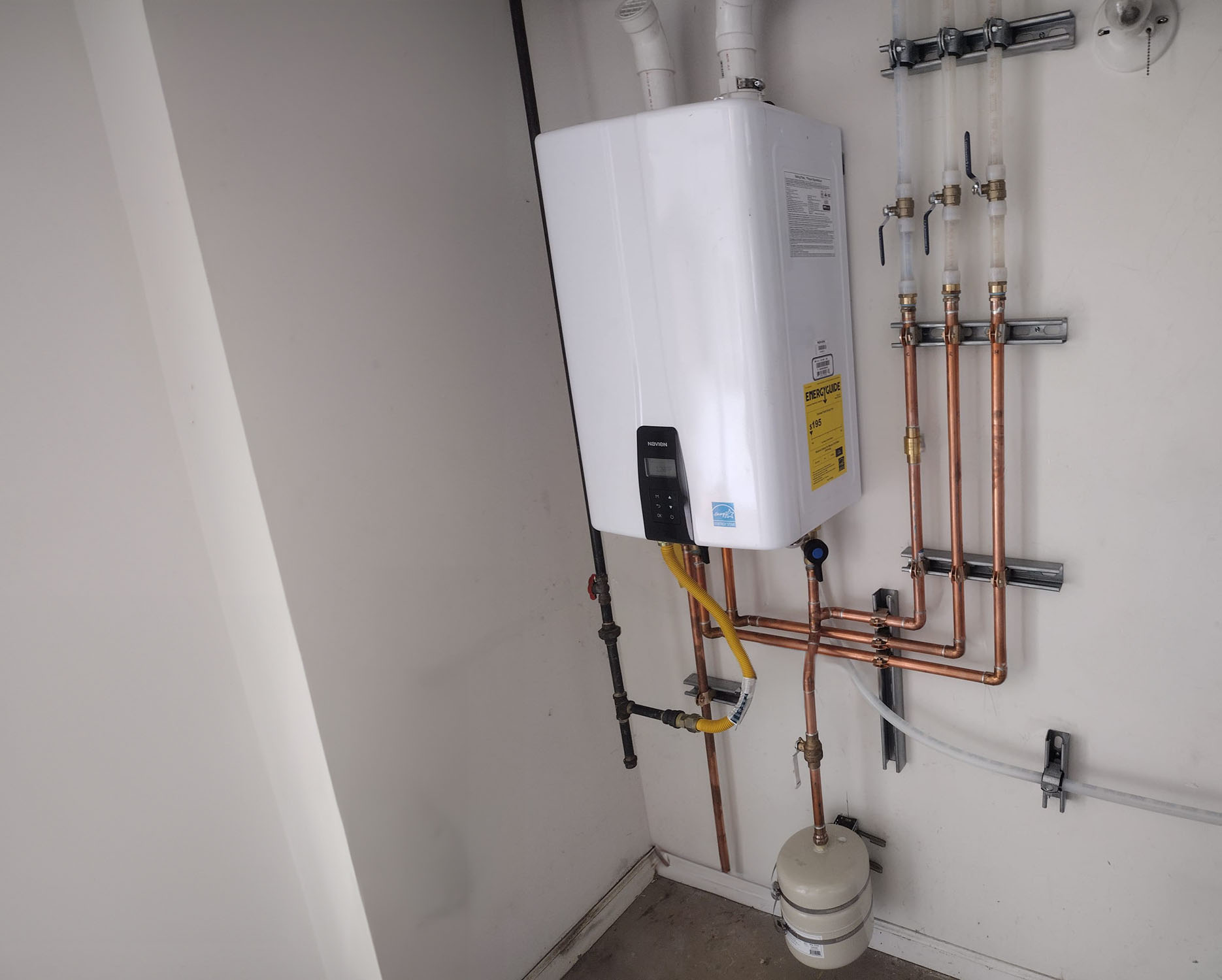

Energy Efficiency
Your trusted partner for professional home services. Quality workmanship, guaranteed satisfaction.




- HEP
- Energy Efficiency
Energy Efficiency | Tankless Water Heater Install | Plumbing | Manchester
Imagine stepping into a Manchester home where hot water never runs out, utility bills shrink, and valuable space is freed up for the things you love. That’s the everyday reality when HEP’s Energy Efficiency Plumbing team replaces bulky, outdated tanks with sleek, on-demand technology that heats water only when you need it. Our local, highly trained technicians fine-tune each system for Greater Manchester’s water quality and climate, so you enjoy whisper-quiet performance, lower carbon emissions, and showers that stay steamy to the very last song on your playlist.
When you schedule a tankless water heater install with HEP, you’re choosing fast, tidy workmanship backed by industry-leading warranties and 24/7 support. We handle everything—from efficient removal of your old unit to optimal venting and gas or electrical connections—so you gain years of energy savings without the headache. Ready to experience endless comfort? Book your appointment today and feel the difference by tomorrow.
FAQs
How does a tankless water heater improve energy efficiency compared with a conventional storage tank?
Unlike a storage tank that keeps 40–80 gallons of water hot all day, a tankless unit only fires its burner or heating elements when you open a tap. This on-demand operation eliminates standby losses and can cut water-heating energy use by 24-34 % for households that use under 41 gallons a day, and up to 50 % when paired with low-flow fixtures. Modern condensing gas models reach thermal efficiencies of 94 - 98 %, squeezing almost every usable Btu out of the fuel and venting far cooler exhaust.
Will a tankless system supply enough hot water for my Manchester home, even in winter?
Yes—provided the unit is sized for the peak demand and local groundwater temperature. In Manchester the incoming water can drop to about 50 °F (10 °C) in January. A properly sized 199,000 BTU (or larger) gas condensing unit delivers roughly 5–7 gpm of 120 °F water under those conditions—enough for two simultaneous showers and a running appliance. During our site visit we calculate your required flow rate, choose the right model, and, if needed, suggest parallel or cascading units for large households.
What size and type of tankless heater do I need—gas or electric, condensing or non-condensing?
Electric tankless units work well for point-of-use fixtures or small flats but typically need 120–150 A of dedicated service for whole-house supply—beyond most Manchester homes’ panels. For whole-home applications we generally recommend a high-efficiency (≥0.95 UEF) condensing natural-gas or LPG model. We base the size on the simultaneous fixtures you want to run: add each fixture’s flow rate (e.g., 2.0 gpm shower + 1.5 gpm sink = 3.5 gpm) and factor in a 70 °F rise. We then select the next-largest certified unit to guarantee consistent temperature without short-cycling.
Are there rebates or tax incentives in Manchester for installing an energy-efficient tankless water heater?
Yes. Through NHSaves, Eversource and Unitil currently offer up to a $500 rebate on ENERGY STAR® certified gas tankless units ≥0.95 UEF. In addition, the federal Energy-Efficient Home Improvement Credit (IRC 25C) can return 30 % of the installed cost—up to $600—on your tax filing. We complete the rebate paperwork for you and provide the AHRI certificate and invoice you’ll need for the IRS. Programs change yearly, so we verify the latest incentives before installation.
What maintenance does a tankless water heater require, and do you provide service?
To maintain efficiency and protect the heat exchanger you should flush the unit with a 50/50 white-vinegar solution (or manufacturer-approved descaler) every 12–24 months—more often if Manchester’s moderately hard 7–10 grains/gal water causes scale buildup. The flame sensor and intake filter also need annual cleaning. We offer a low-cost maintenance plan that includes full descaling, combustion-analysis tuning, and software updates. Regular service extends the warranty and pushes real-world life expectancy to 20+ years.
How long does installation take and how much downtime should I expect?
Most change-outs—from tank to wall-hung tankless—are completed in a single day. We: 1) drain and remove the old heater, 2) hang and plumb the new unit, 3) upsize the gas line if needed, 4) install concentric PVC or stainless venting, 5) connect the condensate drain, and 6) commission the system. You’ll be without hot water for roughly 4-6 hours. For new constructions or meter upgrades, the total project may span 2–3 days, but we coordinate inspections to minimize any service interruption.